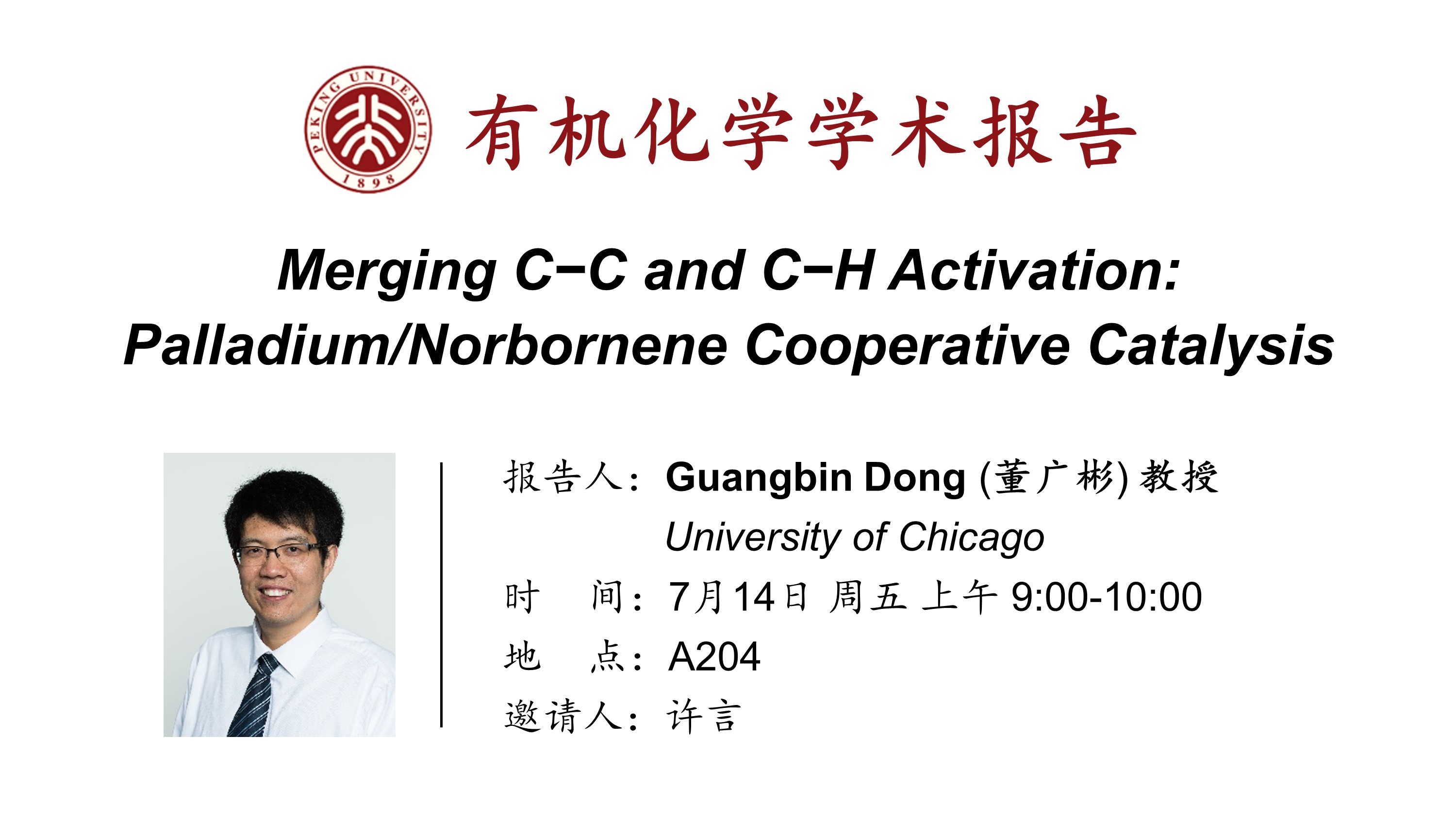Speaker: Guangbin Dong, University of Chicago
Time: 9:00-10:00 a.m., July 14, 2023, GMT+8
Venue: College of Chemistry and Molecular Engineering, Room A204
Abstract:
Achieving site-selectivity in arene functionalization that is complementary to the one from electrophilic aromatic substitution (EAS) reactions has been a long-standing quest in organic synthesis. The palladium/norbornene (Pd/NBE) cooperative catalysis potentially offers a unique approach to this problem, but its usage has been hampered by “three constraints”: the electrophile constraint, the arene-substrate constraint, which is the requirement of using aryl iodides, and the“ortho constraint”, which is the requirement of an ortho substituent for mono ortho functionalization of haloarenes. Here, we show that all these three constraints could be addressed through designing the electrophiles, phosphine ligands and norbornene ligands. Besides Catellani-type ortho alkylation and arylation, new ortho functionalization methods, such as ortho amination, acylation, carboxylation, thiolation and annulation, have been realized. In addition, using a unique phosphine system, various aryl bromides can be employed as the arene substrates. Moreover, a new class of bridgehead-modified NBEs overcomes the “ortho” constraint, thereby enabling a broadly useful strategy for arene functionalization with complementary siteselectivity to EAS reactions. A range of ortho-unsubstituted aryl iodides, previously problematic substrates, now can be employed to provide mono ortho functionalized products effectively. These methods are applicable for late-stage functionalization of complex bioactive molecules at positions that are difficult to be reached by conventional approaches. Beyond arene substrates, we also realized a non-intuitive transformation, that is to migrate ketone carbonyl to its adjacent position in one-pot through α-amination of alkenyl triflate. Conventionally, carbonyl 1,2-migration is a very tedious and less selective process, and generally takes 4-6 steps. This method not only provides a straightforward approach to access oxygen-transposed analogues, but also opens the door for a completely new type of carbonyl transformations.
References:
1. Dong, Z.; Dong, G. J. Am. Chem. Soc. 2013, 135, 18350-18353.
2. Wang, J.; Dong, Z.; Yang, C.; Dong, G. Nature Chemistry 2019, 11, 1106-1112.
3. Wu, Z.; Xu, X.; Wang, J.; Dong, G. Science 2021, 374, 734-740
Source: College of Chemistry and Molecular Engineering
